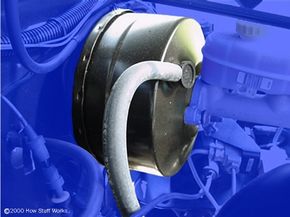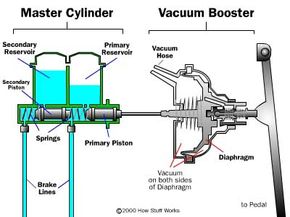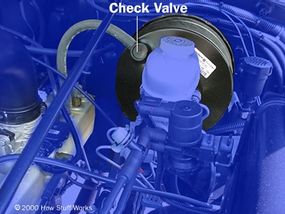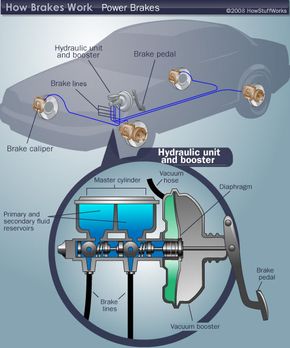If you've ever opened the hood of your car, you've probably seen the brake booster. It's the round, black cannister located at the back of the engine compartment on the driver's side of the car.
Back in the day, when most cars had drum brakes, power brakes were not really necessary -- drum brakes naturally provide some of their own power assist. Since most cars today have disc brakes, at least on the front wheels, they need power brakes. Without this device, a lot of drivers would have very tired legs.
Advertisement
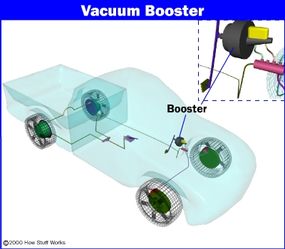
The brake booster uses vacuum from the engine to multiply the force that your foot applies to the master cylinder. In this article, we'll see what's inside the black cannister that provides power braking.
Advertisement
